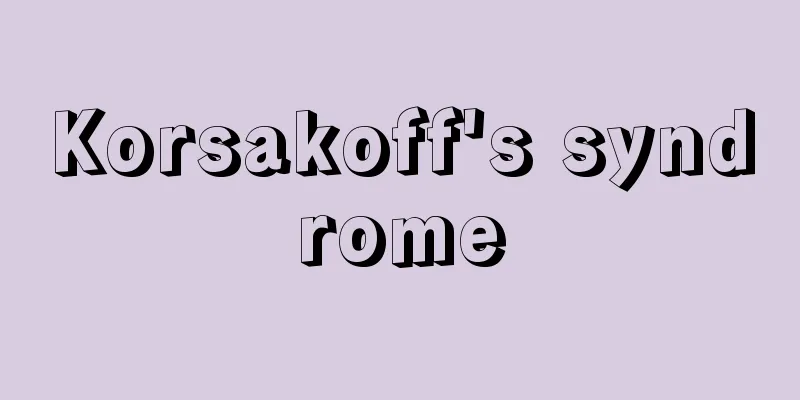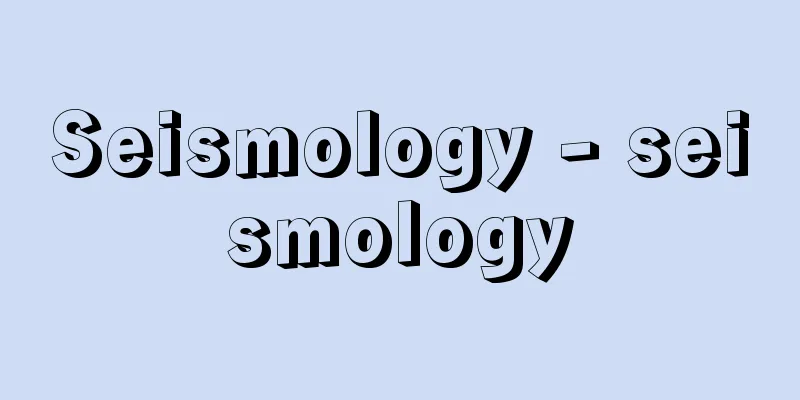Korsakoff's syndrome

|
It is a unique mental state centered on an extreme decline in memory, with memory impairment to the extent that the patient forgets things that happened immediately before the onset of the disease, a condition known as retrograde amnesia, but older memories are relatively well preserved. Disorientation, in which the patient is unable to correctly grasp the time, direction, and other aspects of the environment around the patient, and the patient's tendency to make up stories (confabulation) are also prominent. It is often seen during the course of alcoholism, after attacks of confusion and body tremors (delirium tremens). It can also appear after head trauma, carbon monoxide poisoning, and as a symptom of cerebral softening and senile dementia. It was described by the Russian psychiatrist Korsakoff in 1887. This symptom is likely to occur when there are changes in certain parts of the brain, such as the hypothalamus, which is the hormone center, or the Ammon's horn (hippocampus), which is closely related to memory. It can also occur with widespread changes in the cerebral cortex. Alcoholism is often accompanied by liver damage and polyneuritis. This is also related to nutritional deficiencies such as vitamin deficiency. Treatment involves the administration of small amounts of tranquilizers and symptomatic treatment to improve the patient's overall condition. Korsakoff's syndrome caused by alcoholism may improve temporarily, but it is prone to recurrence. If drinking is not stopped, the prognosis is poor. Those that occur after head trauma or carbon monoxide poisoning will gradually improve. Those seen in cerebral softening and senile dementia may improve temporarily, but the prognosis is poor and cure is difficult. [Tsuyoshi Ishii] Source: Shogakukan Encyclopedia Nipponica About Encyclopedia Nipponica Information | Legend |
|
記銘力の極端な低下を中心とした独特の精神状態で、直前のことも忘れるほどの記銘障害、発病以前のことまで忘れる、いわゆる逆行健忘がみられるが、古い記憶は比較的保たれる。時間や方角など自分を取り巻く環境を正しく把握できなくなる失見当、およびいいかげんな作り話(作話症)も目だつ。アルコール依存症の経過中に、意識混濁と身体の震えをおこす発作(振戦譫妄(せんもう))のあとにみられることが多い。そのほか、頭部外傷、一酸化炭素中毒のあとや、脳軟化、老年痴呆(ちほう)の症状としても現れる。1887年、ロシアの精神病学者コルサコフにより記載された。 この症状は、脳の一定部位、たとえばホルモンの中枢である視床下部、記憶に関係の深いアンモン角(海馬)などに変化があるときにおこりやすい。大脳皮質の広範な変化でもおこることがある。アルコール依存症の場合は肝障害、多発神経炎などを伴うことが多い。これにはビタミン不足など栄養の不足も関係がある。治療としては、少量の精神安定剤の投与や全身状態を改善するための対症療法が行われる。アルコール依存によるコルサコフ症候群は、一時軽快しても再発しやすい。飲酒をやめなければ、予後は不良である。頭部外傷、一酸化炭素中毒のあとにくるものは、しだいに軽快する。また、脳軟化や老年痴呆にみられるものは、一時軽快することもあるが、予後は不良で、治癒は困難である。 [石井 毅] 出典 小学館 日本大百科全書(ニッポニカ)日本大百科全書(ニッポニカ)について 情報 | 凡例 |
Recommend
Horseback riding
A class of warriors who could ride horses. After t...
Archboldia papuensis (English spelling) Archboldiapapuensis
…The female builds a nest in a tree at a consider...
Mizosoba - Mizosoba
An annual plant of the Polygonaceae family (APG c...
Constellation Quick Guide - Seiza Hayami
A simple star chart that allows you to see at a gl...
Suwa Daimyojin Paintings - Suwa Daimyojin Paintings
The origins of Suwa Taisha Shrine, the Ichinomiya ...
Adolescent crisis
A psychiatric term referring to a mental crisis du...
Iranian Azerbaijan - Iranian Azerbaijan
…The average monthly temperature in Baku is 28°C ...
Curtius
German Romance language scholar and critic. His re...
Oak - Quercus spp.
A general term for deciduous species of tall trees...
Fault basin
...In this case, the foothills of the basin are i...
Sound Pressure Level - Onatsureberu
Please see the "Sound Pressure" page. S...
Sodium chloride - Sodium chloride
A compound of sodium and chlorine. Commonly known...
Shigeaki Aisu - Shigeaki Aisu
...In addition to rice cultivation, the area is k...
Sino-Japanese War
An all-out war between Japan and China that began...
thigmotropism
…In addition, whether the tendril winds left-hand...









